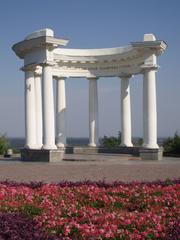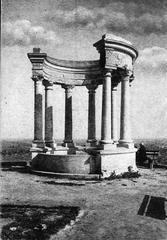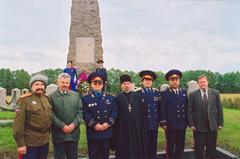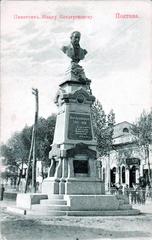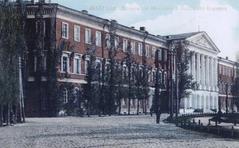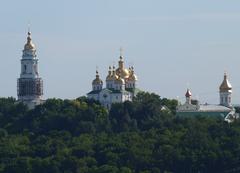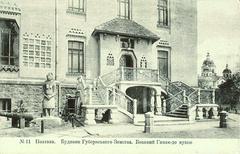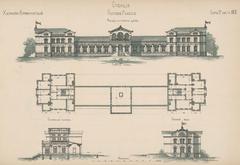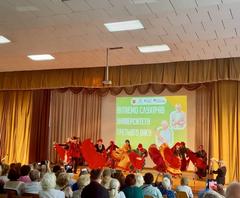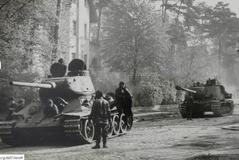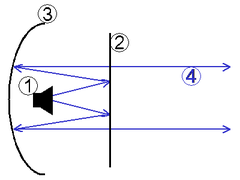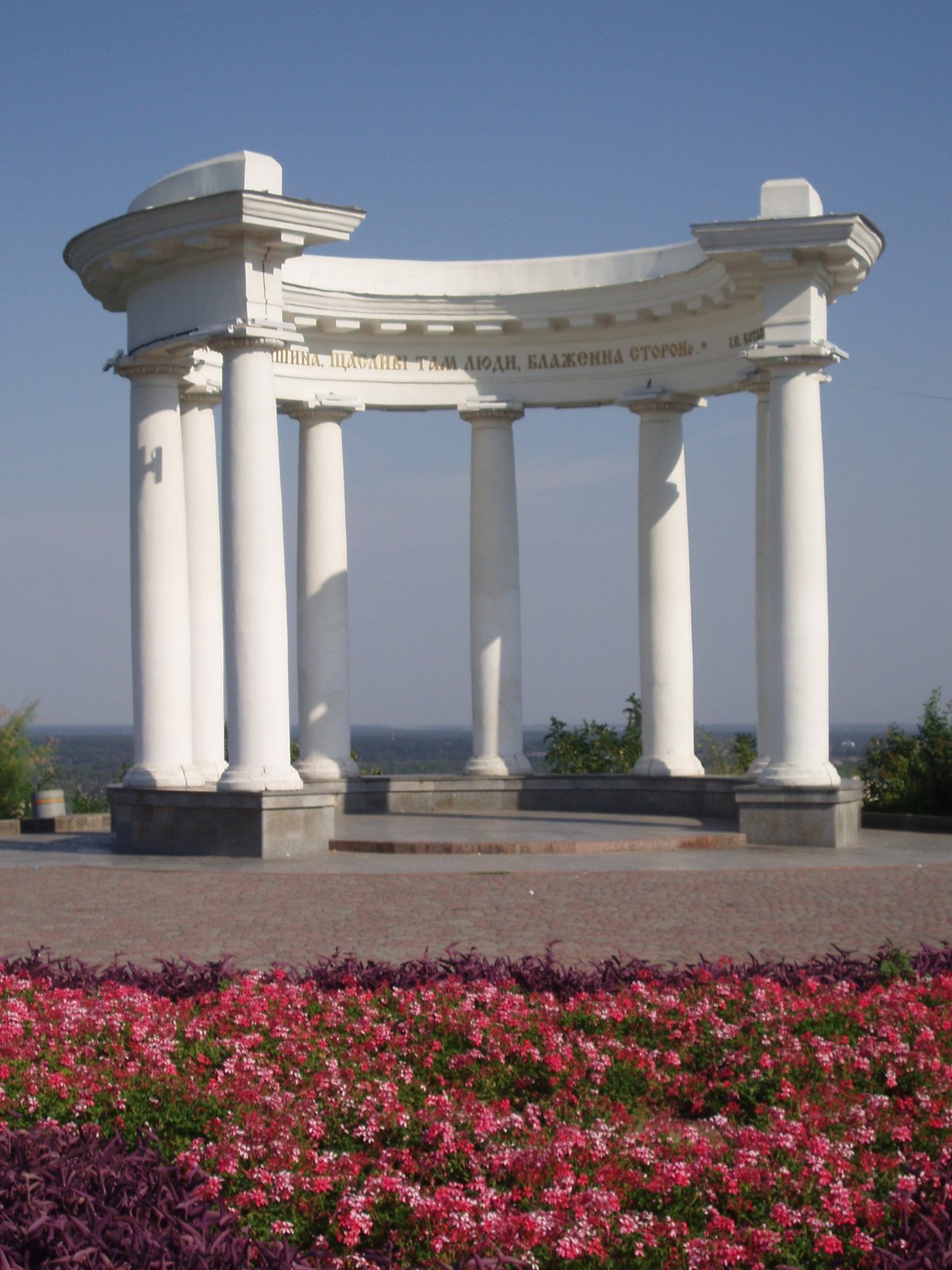
Visiting Біла альтанка (White Rotunda) in Poltava: Hours, Tickets, and Tips
Publication Date: 18/07/2024
Introduction to Біла альтанка
Contents Overview
- Introduction
- Historical and Cultural Background
- The Battle of Poltava and its Significance
- Commemorating the Bicentennial - The Birth of the White Rotunda
- The White Rotunda - More Than Just a Monument
- The White Rotunda Through Time
- Visitor Information
- Visiting Hours
- Tickets
- Travel Tips
- Nearby Attractions and Accessibility
- Special Events and Photography Spots
- Conclusion
- FAQ
Historical and Cultural Background
The White Rotunda in Poltava is more than just a picturesque structure. It commemorates a pivotal moment in the city’s history – the 200th anniversary of the Battle of Poltava.
The Battle of Poltava and its Significance
The Battle of Poltava, fought on June 27, 1709 (Julian calendar), was a decisive battle in the Great Northern War (1700-1721). This conflict pitted the ambitious Russian Tsar Peter I against the Swedish Empire, then a major European power under King Charles XII. The battle took place on the outskirts of Poltava, a city of strategic importance in present-day Ukraine.
The Russian forces, though numerically superior, were considered less experienced than their Swedish counterparts. However, under Peter I’s leadership and with improved military tactics, they inflicted a crushing defeat on the Swedish army. The Battle of Poltava marked a turning point in the war, effectively ending Sweden’s status as a great power and paving the way for the Russian Empire’s emergence as a dominant force in Northern Europe.
Commemorating the Bicentennial - The Birth of the White Rotunda
In 1909, Poltava prepared to commemorate the 200th anniversary of this historic battle. As part of the city’s beautification efforts and to honor the fallen soldiers, the idea for a monument emerged. The chosen location was a high right bank of the Vorskla River, a site that offered panoramic views of the city and the sprawling battlefield beyond.
The design, a graceful rotunda-style gazebo crafted from wood and crowned with eight elegant columns, was chosen through a citywide competition. The structure was painted white, a symbol of peace and remembrance, giving it the name it’s known by today – Біла альтанка.
The White Rotunda - More Than Just a Monument
The White Rotunda, inaugurated on June 27, 1909, quickly became a cherished landmark in Poltava. Its location, offering breathtaking views, made it a popular spot for locals and visitors alike. The rotunda served as a place for leisurely walks, romantic rendezvous, and quiet contemplation.
Beyond its aesthetic appeal, the White Rotunda embodied the spirit of Poltava. It stood as a testament to the city’s historical significance, a reminder of the sacrifices made on its soil, and a symbol of hope for a peaceful future.
The White Rotunda Through Time
The 20th century brought turbulent times to Ukraine, and Poltava was not spared. During World War II, the city was occupied by Nazi forces, and the White Rotunda, like many other structures, suffered damage. However, it remained standing, a silent witness to the tumultuous events unfolding around it.
After the war, the White Rotunda was restored to its former glory, once again becoming a beloved gathering place for the people of Poltava. Over the years, it underwent several renovations and restorations, ensuring its preservation for future generations.
Visitor Information - Tickets, Hours, and Tips
Planning a visit to the White Rotunda? Here’s what you need to know:
- Visiting Hours: The White Rotunda is accessible year-round and open 24/7, making it an easy addition to any itinerary.
- Tickets: There is no admission fee to visit the White Rotunda, allowing everyone to enjoy this historical landmark.
- Travel Tips: The best time to visit is during spring or early summer when the surrounding park is in full bloom. Bring a camera to capture the stunning views and consider a guided tour to learn more about the site’s history.
Nearby Attractions and Accessibility
The White Rotunda is conveniently located near other notable attractions in Poltava:
- Poltava Regional Museum: Just a short walk away, this museum offers extensive exhibits on the region’s history and culture.
- Poltava Battle Museum: Dive deeper into the history of the Battle of Poltava with artifacts and detailed accounts of the conflict.
- Round Square: A historical and architectural landmark featuring a park and several impressive buildings.
Special Events and Photography Spots
The White Rotunda and its surrounding park often host various events, including historical reenactments, cultural festivals, and public gatherings. The gazebo’s panoramic views make it a popular photography spot, especially during sunrise and sunset.
Conclusion
The White Rotunda is more than just a monument or a scenic viewpoint; it’s a symbol of Poltava’s enduring spirit. It represents the city’s resilience in the face of adversity, its commemoration of the past, and its aspirations for a peaceful future. A visit to the White Rotunda offers a glimpse into the heart of Poltava, connecting visitors to its rich history and vibrant culture.
FAQ
Q: What are the visiting hours for the White Rotunda?
A: The White Rotunda is accessible 24/7.
Q: How much are tickets for the White Rotunda in Poltava?
A: There is no admission fee to visit the White Rotunda.
Q: Are there guided tours available?
A: Yes, guided tours are available and highly recommended for a richer historical context.
